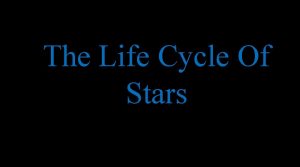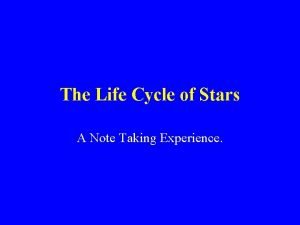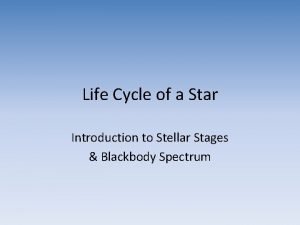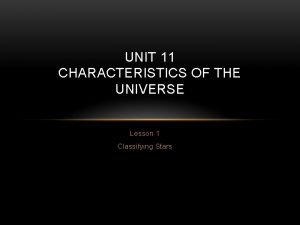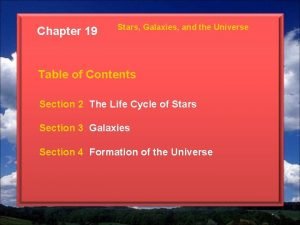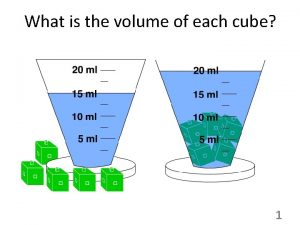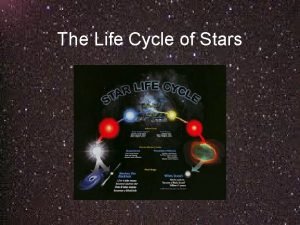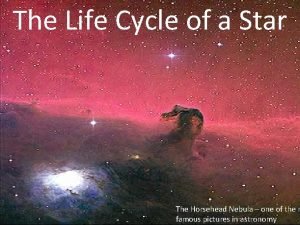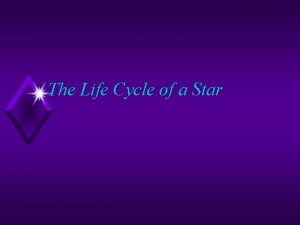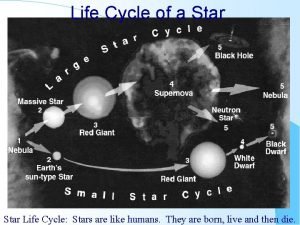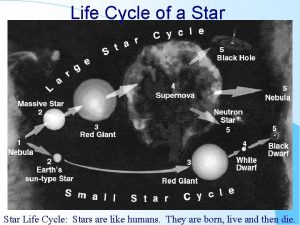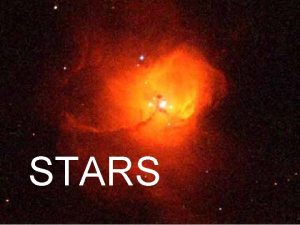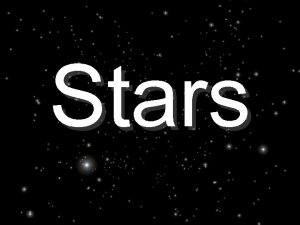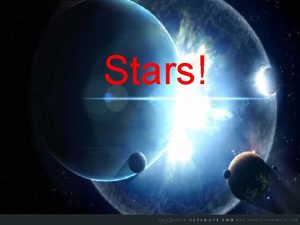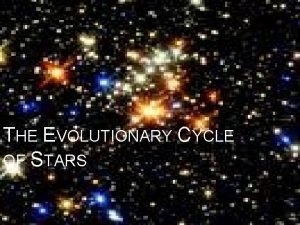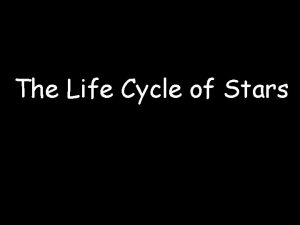Life Cycle of Stars Mr Anderson A Star











- Slides: 11

Life Cycle of Stars Mr. Anderson

A Star is Born Stars begin their lives as part of a Nebula. - Nebula: large cloud of gas and dust spread over an immense volume.

A Star is Born Gravity pulls the gas and dust together until it gains enough mass to form a protostar. - Proto= earliest in greek Eventually Nuclear fusion begins, and a star is born.

Life of a Star How long a star lives depends on its mass. - High mass = Shorter life - Low mass = Longer life Think of a big car vs. a small car

Life of a Star

Red Giants/Supergiants When a star begins to run out of fuel the core shrinks and the outer portion expands. GRAVITY - Red Giant = low mass - Super Giant = high mass

White Dwarf Formed from low mass and medium mass stars. 1) Planetary Nebula forms as gases expand. 2) Blue-white core forms white dwarf. 3) After billions of years turns to black dwarf.

Supernova Huge explosion the results when a high mass star runs out of fuel. Can form a nebula that contracts to form a recycled star.

Neutron Star The remains of a high mass star. They can be the mass of 3 suns, but only 25 Km in diameter. Pulsar = spinning neutron star.

Black Holes The most massive stars become black holes when they die. - Black hole= an object with gravity so strong nothing, not even light can escape.

Black Holes
 Star of wonder star of night star of royal beauty bright
Star of wonder star of night star of royal beauty bright The rwenzori mountains mary daniels is a student in england
The rwenzori mountains mary daniels is a student in england Life cycle of a medium star
Life cycle of a medium star What is the life cycle of a star
What is the life cycle of a star What are the stages of a stars life cycle
What are the stages of a stars life cycle Life cycle of stars graphic organizer
Life cycle of stars graphic organizer Chapter 19 section 2 the life cycle of stars answer key
Chapter 19 section 2 the life cycle of stars answer key Star life cycle 1-10
Star life cycle 1-10 Which island is the oldest
Which island is the oldest Life cycles of stars
Life cycles of stars Life cycle of a star
Life cycle of a star Star life cycle diagram
Star life cycle diagram


